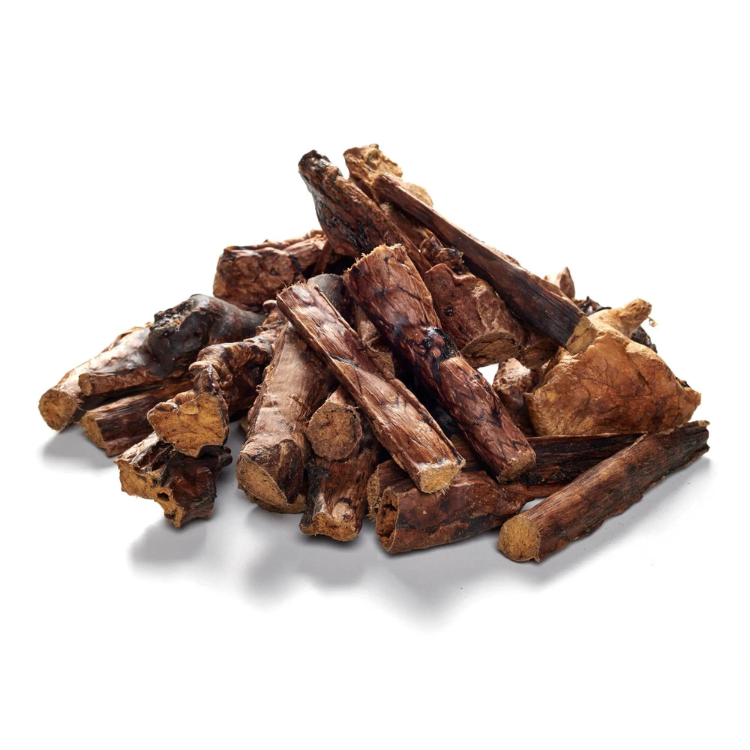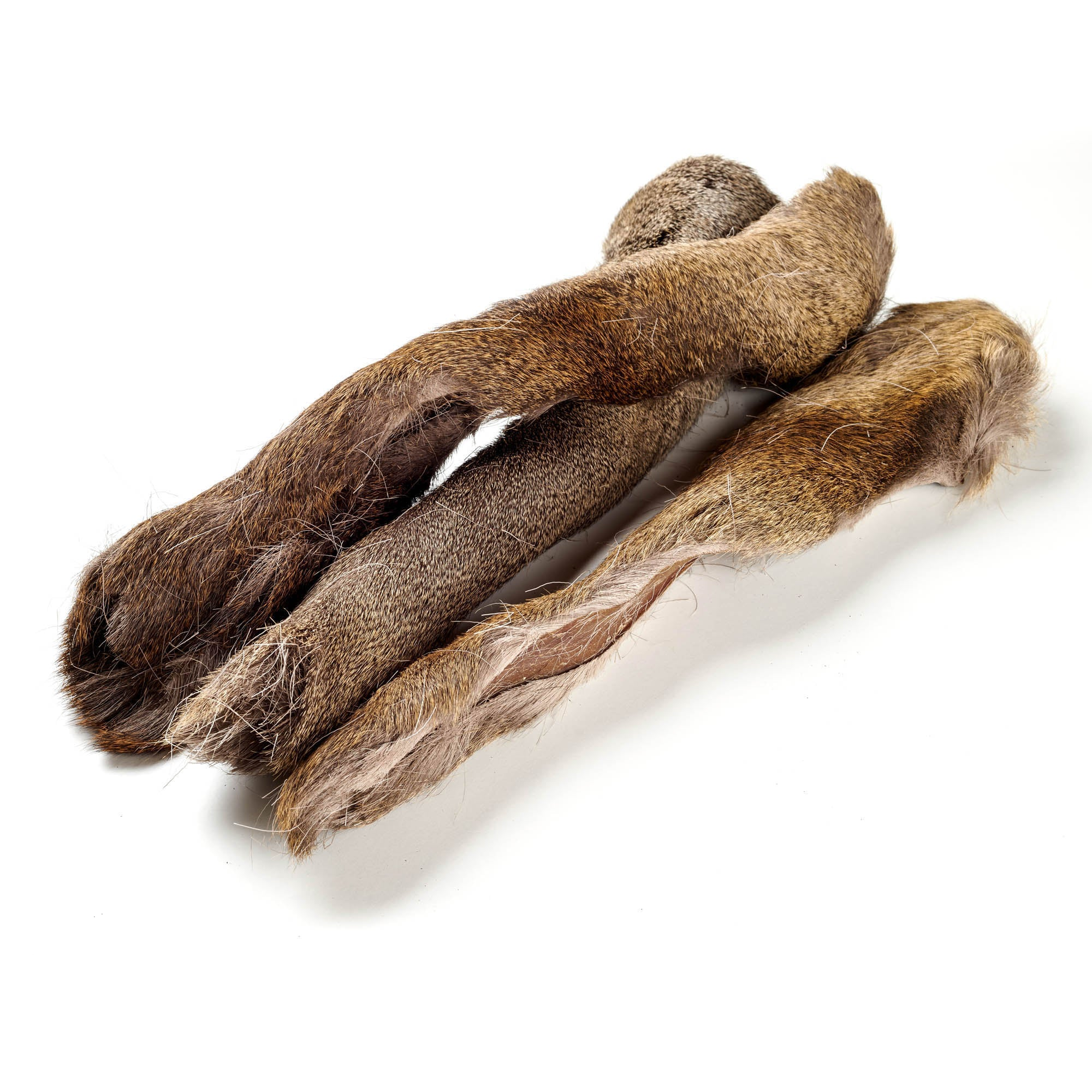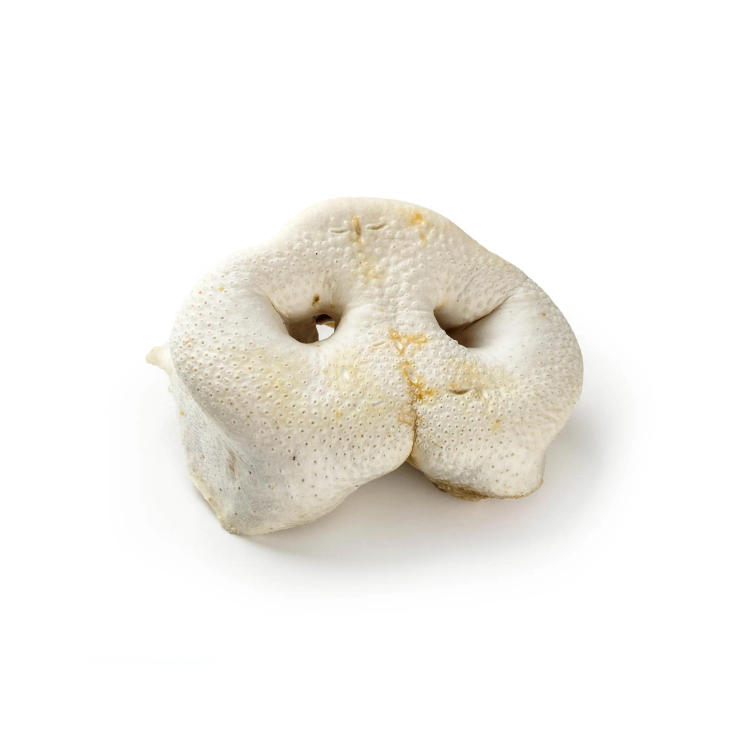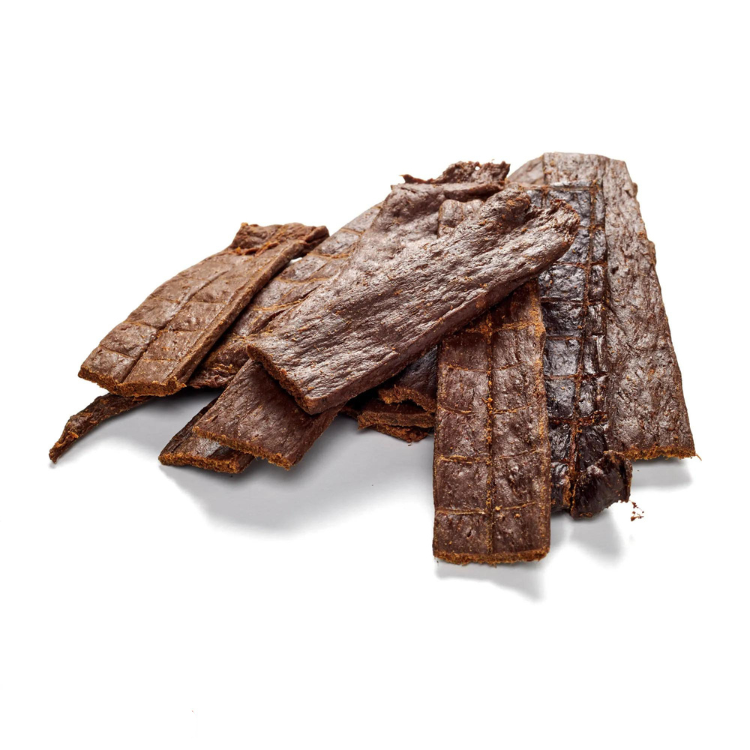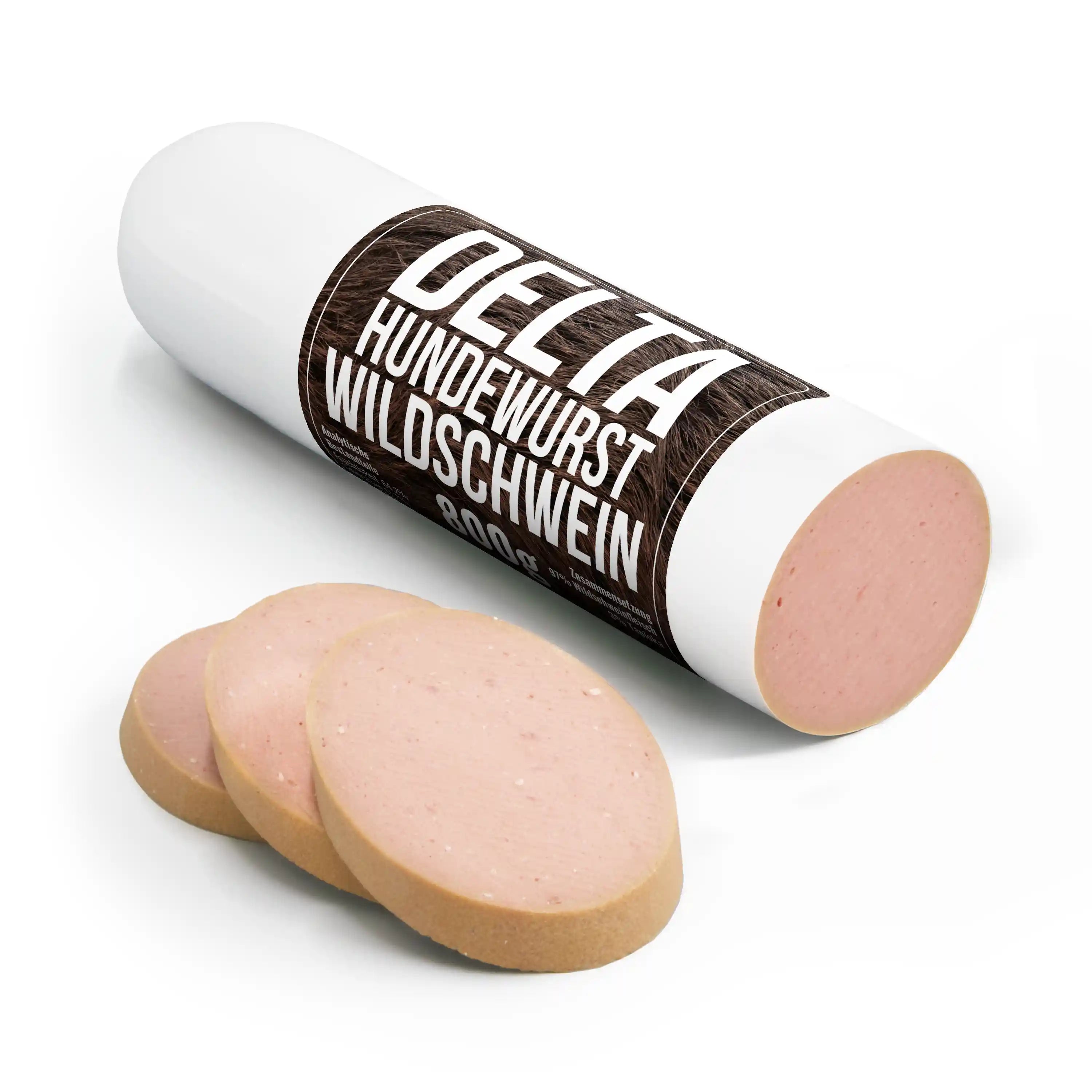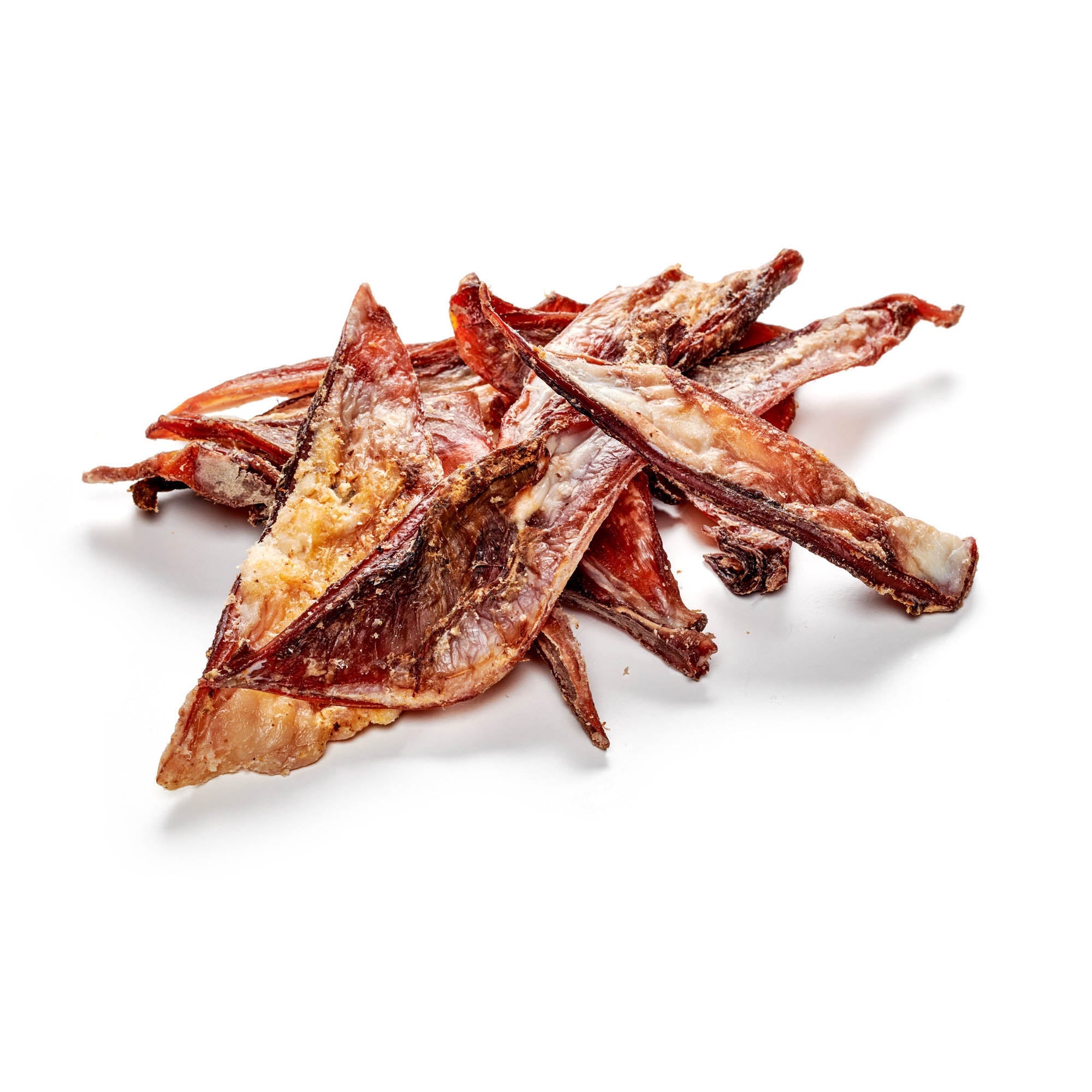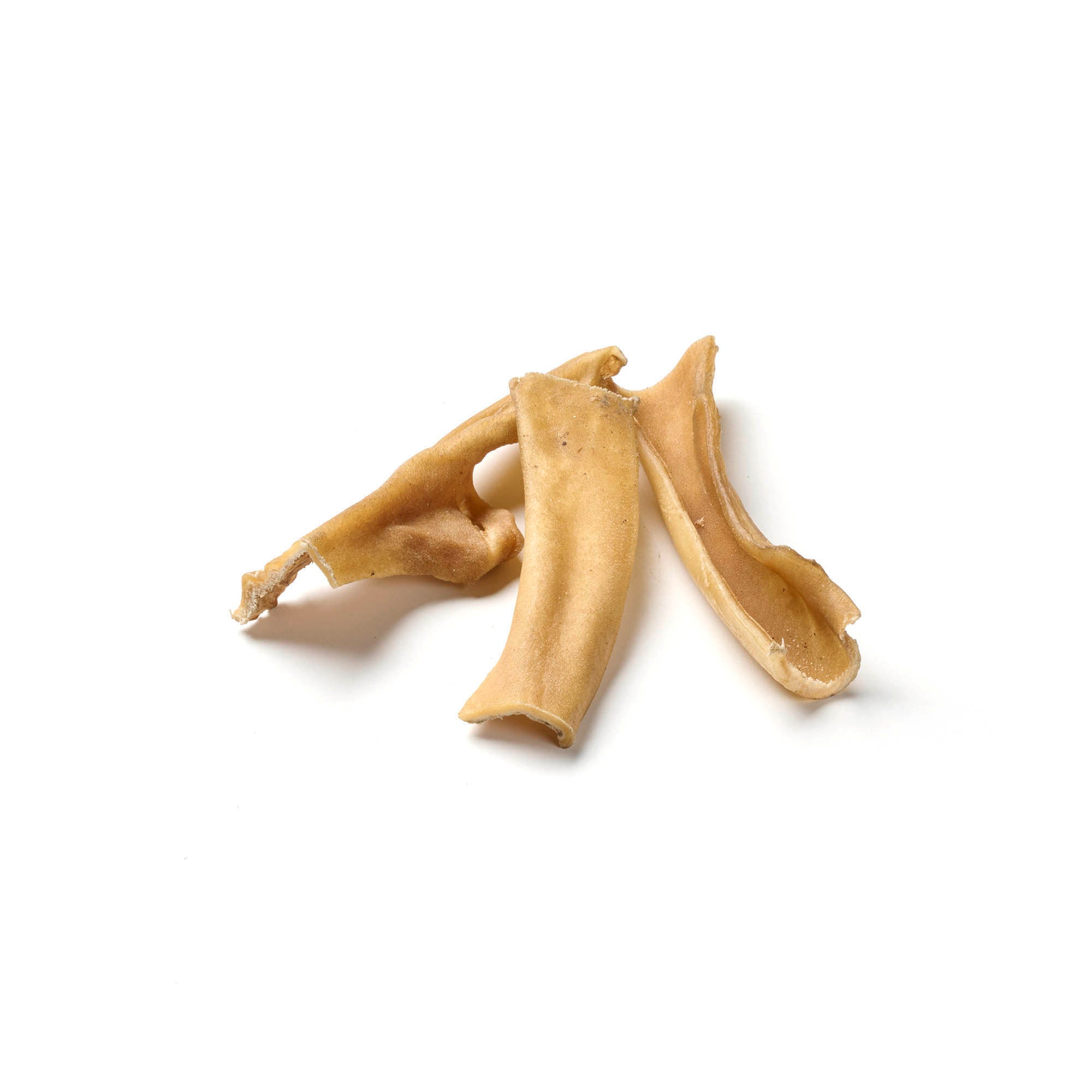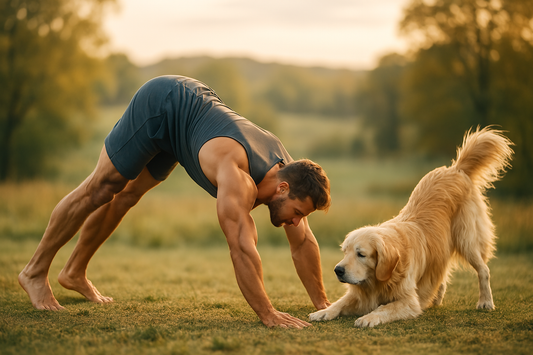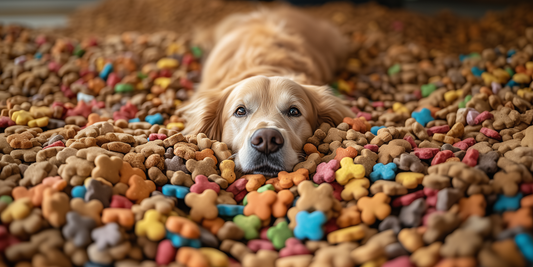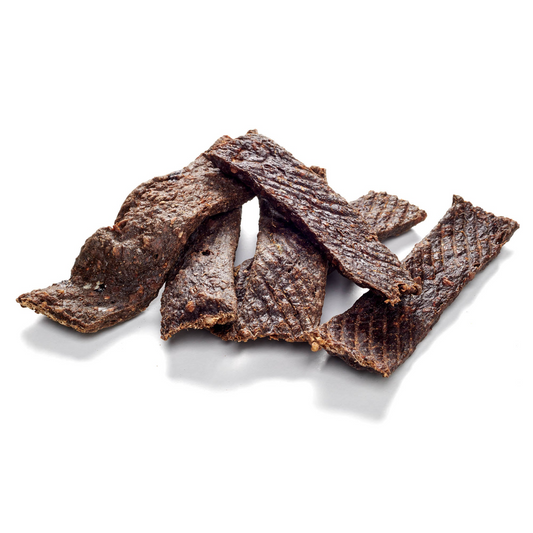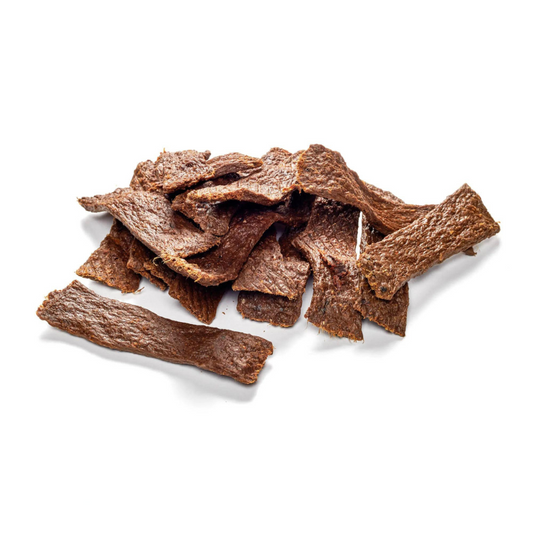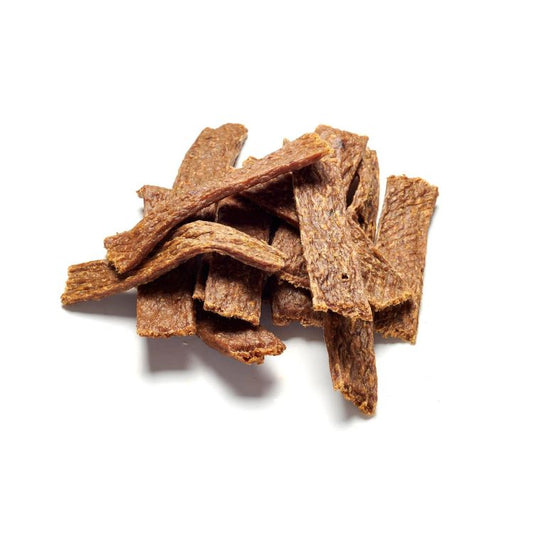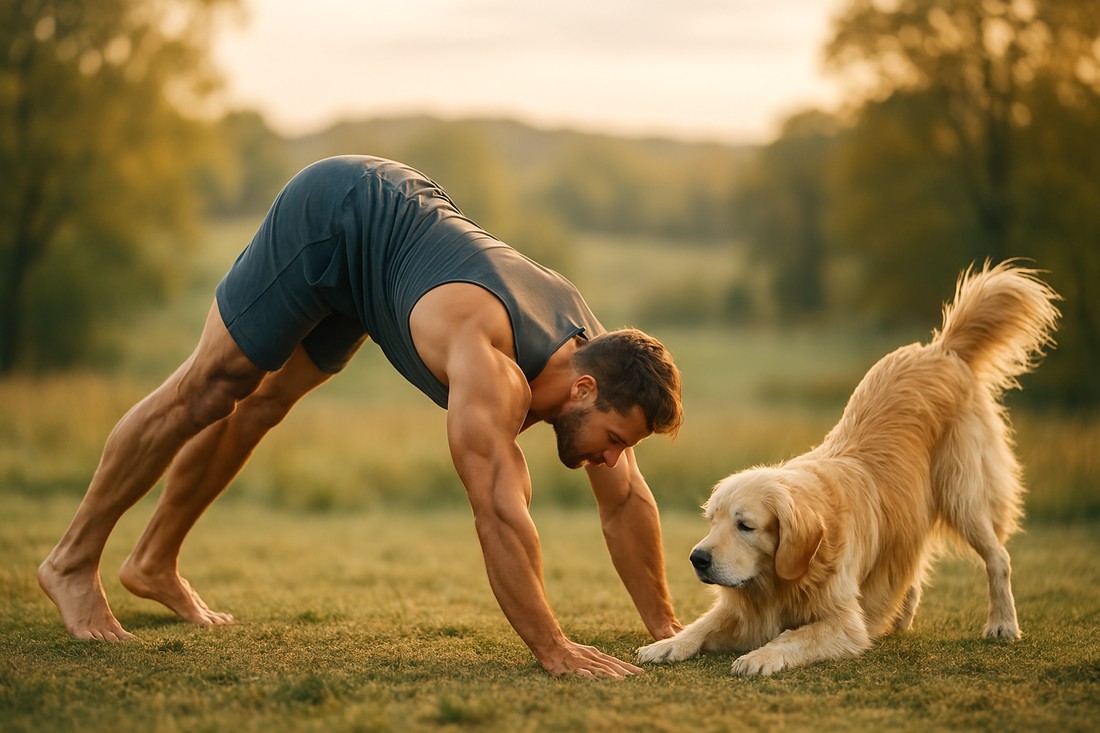
Dogs and fitness: The best workouts together
Share
For many people, their dog isn't just a pet, but a loyal partner who participates in all areas of life. So why not get active together when it comes to fitness? This benefits not only the body, but also the mental health—both for owner and four-legged friend. Physical activity also strengthens the bond of trust and provides exciting experiences in everyday life. In this article, you'll learn about varied workouts that humans and dogs can do together. Whether it's running, agility, or stretching together: with the right training, exercise becomes fun. Discover how you can achieve your goals while doing good for your four-legged friend.
Contents: Dogs and Fitness: The Best Workouts Together
- Jogging together: Staying fit while running
- Agility training: Dexterity for dog and owner
- Doga: Yoga with the dog
- Cycling tours: collecting kilometers on two and four legs
- Hiking and Trekking: Experience nature together
- Swimming and water games: Gentle whole-body workout
- Flyball: Team sport with speed
- Discdogging: Conquering the Frisbee together
- Conclusion
Bring joy to your dog's day with our treats!
Jogging together: Staying fit while running
Jogging is one of the easiest and most effective ways to get active with your dog. This endurance training strengthens the cardiovascular system, muscles, and joints – in both humans and animals. Since not every dog is born to be a long-distance runner, it is recommended to gradually increase the distance and adapt the running pace to your four-legged friend. Breaks and plenty of water are essential to prevent overexertion. In warm weather, it is advisable to jog in the morning or evening to prevent your dog from overheating. A gentle warm-up loosens joints and muscles and prevents injuries. Also, make sure your dog has a well-fitting harness so that your dog feels comfortable. Running together not only increases your fitness but also intensifies your bond and provides you with many unforgettable moments.
What should be considered
Slow acclimation: Start with short runs and walking breaks so your dog can get used to the pace and the strain.
Safety and comfort: Choose a well-fitting harness and walk on surfaces that are as gentle on the joints as possible (e.g. forest or park paths).
Agility training: Dexterity for dog and owner
Agility training combines fun, skill, and teamwork in a dynamic sport in which dogs are guided over obstacles such as tunnels, hurdles, or slalom poles. These activities build muscle strength, increase coordination, and challenge your four-legged friend's mind. Because communication and trust play a key role, agility also strengthens your human-dog bond. If you're new to agility, you can practice at a dog school or club under professional supervision. It's important to adapt the pace and difficulty to your dog's age and fitness level. Regular breaks and motivating praise keep the fun high. When done correctly, agility not only keeps your dog busy, but also provides entertainment and exercise for you.
What should be considered
Attend a basic course: Learn the correct technique for obstacles such as tunnels, slaloms or seesaws at a dog school.
Individual adjustment: Adjust the height and difficulty of the obstacles to your dog's age and fitness.
Doga: Yoga with the dog
Doga combines the calming effect of yoga with the intense bond between human and dog. In a relaxed atmosphere, you perform slow, mindful exercises together that balance body and mind. Classic yoga poses are modified so that your dog is playfully integrated – for example, by leaning against you or sitting between your legs. In addition to the physical benefits, such as improved flexibility and muscle strength, you both benefit from the meditative calm and intensified bond. An experienced instructor helps you avoid overexertion and shows you how to gently involve your dog in the exercises. Together, you discover a relaxed form of training that gives you a new body awareness and inner balance.
Reward your best friend with our dog treats!
What should be considered
Easy positions: Involve your dog in simple exercises and make sure he can move freely.
Quiet environment: Find a place without distractions so you can focus on breathing and relaxed movements.
Cycling tours: collecting kilometers on two and four legs
Cycling with your dog is a great way to explore the countryside and stay fit. Your dog will walk on a special bike leash or alongside you on your bike. Start with short distances and gradually increase the speed and distance with your dog. Make sure you use a sturdy leash or a suitable harness to prevent accidents. Breaks and plenty of water are essential, especially on hot days, to avoid overheating. Choose easy-to-walk routes away from heavy traffic to ensure safety. This way, shared cycling trips become a real leisure highlight for you and your sporty companion.
What should be considered
Safe equipment: Use a special bike leash or a suitable harness to avoid accidents.
Short distances to start with: Increase the pace and distance gradually so that your dog can get used to the strain.
Hiking and Trekking: Experience nature together
Hiking or trekking with your dog is a great way to get some fresh air and improve your fitness at the same time. The varied smells and sights of a hiking trail are particularly appealing to many dogs. To ensure the tour goes smoothly, you should adjust the length of the route to your four-legged friend's age and fitness level. Regular water breaks and snacks help maintain energy levels. Also, make sure your dog's equipment fits well, such as a harness or collar , and check their paw pads for injuries every now and then. With a little planning, such as choosing a suitable route and bringing enough provisions, hiking becomes a shared adventure. The positive effects on your health and your bond are an added incentive to keep going.
What should be considered
Route selection: Plan routes according to your dog's size, condition and experience.
Paw check: Check your dog's paws regularly for injuries or foreign objects while out and about.
Swimming and water games: Gentle whole-body workout
Swimming is a particularly joint-friendly sport that builds muscle and endurance without placing too much strain on the joints. This effect is particularly beneficial for older dogs or dogs with joint problems. A shallow bank or a dog pool is ideal for first attempts in the water . Floating toys or fetch games can further increase your dog's motivation. Always pay attention to safety: A life jacket is a good idea for inexperienced or cautious dogs. To prevent overexertion, keep an eye on your dog and take breaks well in advance. This way, splashing around in the water becomes a fun, full-body workout for both of you.
What should be considered
Acclimatization in shallow water: Let your dog move around in shallow areas first before going into deeper water.
Safety measures: Make sure the water is clean and, if necessary, use a life jacket for inexperienced or nervous dogs.
Discover delicious dog snacks directly from our range!
Flyball: Team sport with speed
Flyball is a fast-paced dog sport that fascinates dogs and humans alike. The dogs sprint over small hurdles to a flyball box, release the ball, and bring it back to their owners. Speed, jumping ability, and good teamwork are the key here. Since flyball is often contested in tournaments, the excitement is high for everyone involved. Thorough preparation with warm-up exercises helps prevent injuries, while continuous training improves your dog's stamina and responsiveness. Thanks to the varied routines and exciting atmosphere, both athletic dogs and those with a moderate need for exercise enjoy this fast-paced team sport.
What should be considered
Warm-up: Before you start with rapid sprints, you should prepare your dog with short running sequences and small hurdles.
Strengthen team spirit: Practice returning the ball in small units and slowly increase the speed and difficulty.
Discdogging: Conquering the Frisbee together
Disc dog combines action, creativity, and precision. You and your dog will learn spectacular throwing and catching maneuvers with a Frisbee. The combination of jump-intensive exercises and concentrated retrieving not only trains your four-legged friend's physical fitness but also challenges their mental skills. A safe introduction is achieved with special dog Frisbees, which are lightweight and safe for teeth and gums. Gradually increase the difficulty once your dog is confident in catching the disc and enjoys the tricks. Always ensure that your dog is neither physically nor mentally overwhelmed. Disc dog is a fantastic workout for anyone who wants to have lots of fun and develop a close relationship with their dog.
What should be considered
Suitable Frisbee: Use a disc specially designed for dogs that is lighter and gentler on teeth.
Playful development: Start with short throws and motivate your dog with praise and small rewards to increase his ability to catch the food.
Conclusion
Whether you're into strenuous running, joint-friendly swimming, or exciting team activities like agility and flyball, working out with your dog will increase fitness , well-being, and bonding. It's important to always keep your four-legged friend's individual needs and abilities in mind, ensure adequate breaks, and keep your training varied. With patience, positive reinforcement, and appropriate equipment, you'll achieve your athletic goals and share unforgettable moments. This makes exercise a real benefit for both body and soul for both humans and dogs.
High-quality dog chews for your faithful companion can be found here!




